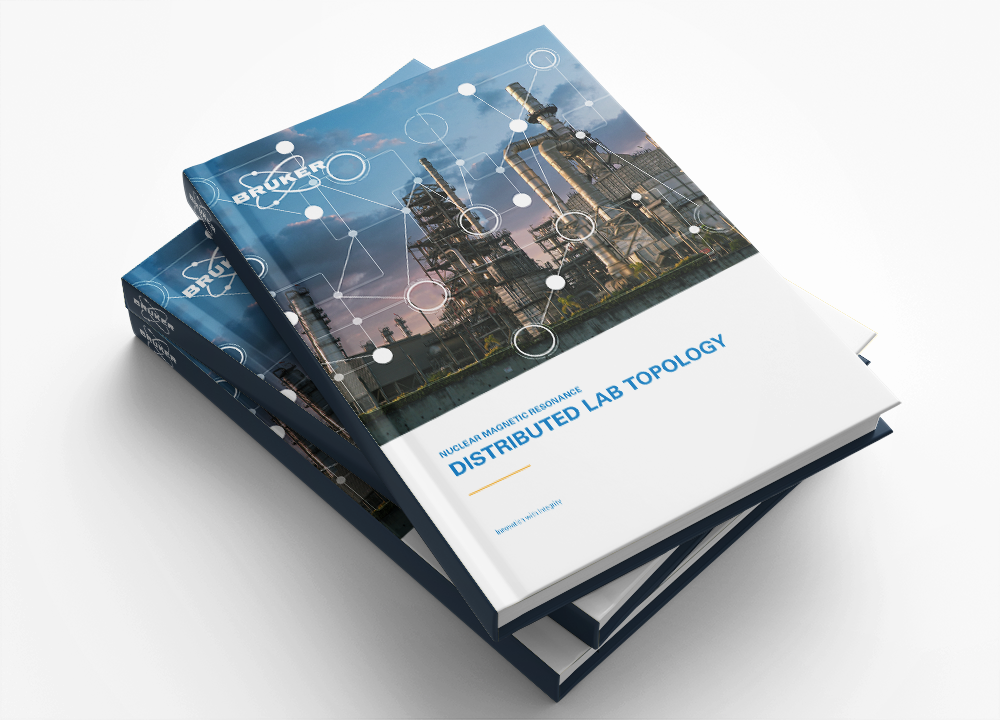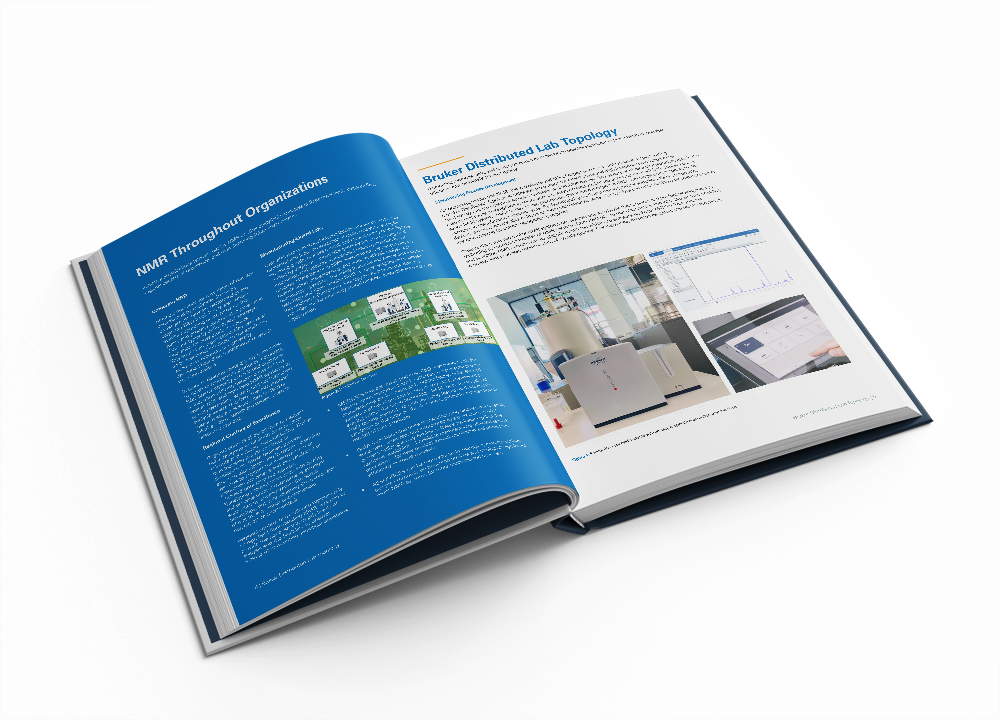Nuclear magnetic resonance spectrometry (NMR) is a powerful, unique technique for chemical analysis that ranges from basic identification and quantification of substances to molecular structure elucidation.
Download the eBook
With an array of NMR systems - from cost-effective benchtop equipment to high-performance floor-standing instruments - Bruker offers an efficient solution portfolio for all-inclusive value chain coverage from product innovation to manufacturing.
Driven by the industry’s best analysis and acquisition software, TopSpin, and the user-friendly graphic interface with a push-button control software GoScan, enabling easy operation, Bruker NMR systems allow organizations to achieve a Distributed Lab Topology (DLT) in which expertise, methods, and data can be easily and quickly shared between different stages in the value chain.
Bruker provides Magnetic Resonance software, hardware, and services as an integrated deployment concept to support distributed organizations for a comprehensive end-to-end value chain coverage: from production innovation to manufacturing and from incoming goods testing to final product quality control, from regional hubs to local entities.

Across the Organization
- Considerably reduce the time-to-result
- Free-up measurement time at high-investment instruments
- Build up local expertise by using training synergies
- Generate coherent data through harmonized methods
- Enhance the analytical testing frequency
- Directly benefit from expert knowledge and support
Strategic Innovation and New Product Development
- Direct R&D-to-Manufacturing method transfer with backward data streams
- Non-destructive methods with reduced risk of cross-contamination for sample archiving
- Optimized method validation reduces time-to-market for new product roll-outs
- Optimized operational costs via framework agreements covering the entire value chain
- Software-only adaptation to new products enhances scalability
- Training and service synergies covering a variety of laboratory topologies
Continuous Improvement of Production Processes and Products
- Minimizing running costs at the point of manufacture increases competitiveness
- Maximized data consistency, comparability, and availability in real-time
- Single platforms supporting multiple deployments to the cost of ownership
- Audit trail and major production failure case streamlining
- Daily instrument checks are implemented in standard workflow routines to optimize audit trails
- At- and In-Line process control for yield optimization

Download the eBook

This information has been sourced, reviewed and adapted from materials provided by Bruker BioSpin Group.
For more information on this source, please visit Bruker BioSpin Group.